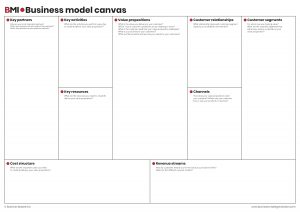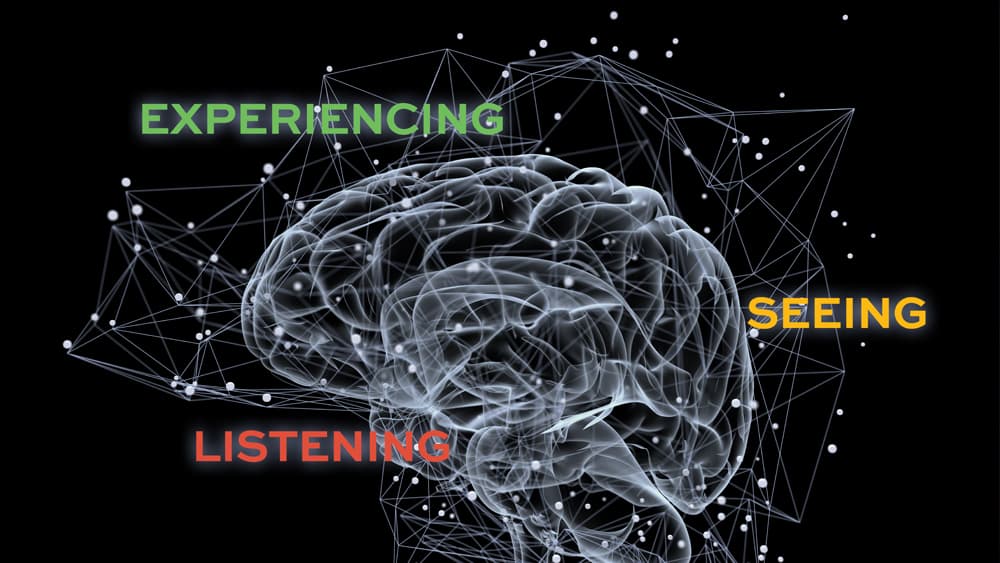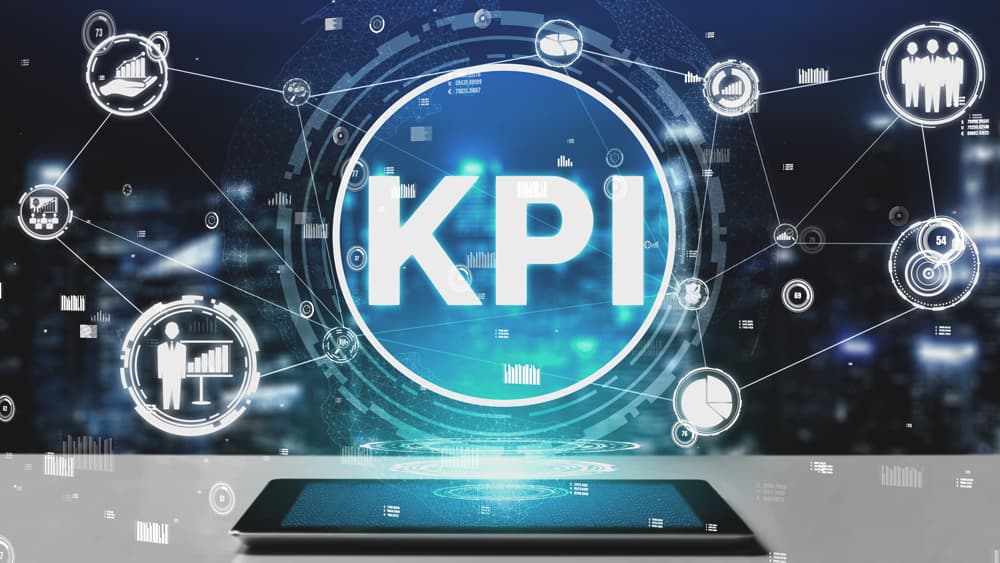The Business Model Canvas (BMC) is one of the strategic management tools for describing the business models of new and existing enterprises. It is a one-page scheme that represents all the business processes of the company. In this article, Inchainge will describe why The Business Model is important for businesses, what it is used for and how to implement it.
What is BMC?
The authors of the Business Model Canvas are economic theorist Alexander Osterwalder and the computer scientist Yves Pigneur. The Model is represented as a template that is used for describing business models and determining the logic of building relationships between the main elements of the business system. Using BMC, it is possible to establish a business plan, both for new and already existing organizations. It is a one-page scheme describing all the business processes of a company.
How does the Business Model Canvas work?
The Business Model Canvas allows seeing the whole picture thanks to the clarity of the model. This tool assists in making a description of projects, analyze them and find strengths and weaknesses. If the creation of various business models is considered as a set of similar tasks, then the Business Model Canvas is such a general algorithm for solving them. A BMC template is a universal language for describing, presenting, analyzing, and transforming business models.
The Model consists of 9 structural blocks which are numbered, but they are not arranged sequentially, but, at first, glance, interspersed. This is explained by the fact that the numbering reflects the sequence of forming the value of a product (or service) for the client, and the location of the blocks reflects the logical relationship of the elements. With this arrangement, the most logically related elements are adjacent, and their relationship is graphically more definite.
It is possible to download the Business Model Canvas by following this Business Models Inc link.

The 9 blocks of the Business Model Canvas include:
1) Customer Segments:
In this block it is important to answer the following questions:
- Who are the customers?
- What segments can they be divided into?
- How can they be influenced?
- What do they think? See? Feel? Do?
The company has to understand who will be interested in the offered products or services, what customers’ needs are and what are the features of the target market. Different customer groups include: mass market, niche markets, market segments, diversification (focusing simultaneously on different market segments), customer interdependence (a company serves the needs of different customers within a single offer).
2) Value propositions
In this block, it is vital to analyze exactly what values in the proposed product (service) attract customers. Here it is important to understand that it is not the “product” itself that attracts, but its features that solve the client’s problems
The questions to be answered:
- What are the products and/or services?
- What problems of the clients does a company solve?
- What needs does a company meet?
- What are the key advantages of the product for the client that helps solve a problem or meet a need?
3) Revenue streams
Based on the collected information about a company, it is possible to understand which areas generate most income, and which revenue streams are less relevant or better to abandon. The “revenue stream” block helps to determine the direction for development and to set priorities.
4) Channels
The channels through which a company contacts its customers are an integral part of any business. Moreover, it is important to take into account all points of contact with the customer: first contact, persuasion, delivery, after-sales service, advertising, etc.
Questions to be answered:
- How does an organization communicate with the customer?
- How is value delivered?
- Is the messaging delivered through channels resonating with our customers?
- How effective are the channels?
- Are the right channels used to successfully reach the customers?
5) Customer relationships
Customer relationships can be described with several criteria. They can be personal, automated, based on self-service. Regarding the regularity of interaction with the customer, there are either standalone one-time interactions or a permanent relationship if a subscription model is used. In terms of customization, the interactions with customers can range from an individualized approach for every client to the application of general rules to all clients. The objectives can also differ:
- Getting new customers
- Retaining former customers
- Getting more income from former customers.
It should be borne in mind that the strategies regarding customer relationships may change over time, depending on market conditions.
Companies should answer the following questions:
- How do you maintain relationships with your clients?
- Is there an individual approach, how is it implemented, for which segment of customers, what are the costs?
6) Key activities
Each business model includes a certain number of key activities. These are the most important actions of the organization, without which its successful work is impossible.
Key activities can be classified as follows:
Production: This activity includes the development, creation, and market launch of a product. Production activity is the main one for the business models of manufacturing companies;
Problem solving: This activity consists in finding the optimal solution to the problems of clients. The key activity is providing services;
Platforms/networks: In business models based on a platform as a key resource, the main activities are those that are associated with this platform or network. Computer networks, commercial platforms, software, and even trademarks can act as a platform.
7) Key resources
There are different types of key resources – intellectual, material, financial resources, and personnel. Companies take into account both those that are necessary for production and those that are necessary for sales, building relationships with customers, and other stages.
8) Key partners
This section describes a network of suppliers and partners, on account to which the business model functions.
Organizations build partnerships to optimize their business models, reduce risks or get resources. Such partnerships become the basis of many business models.
9) Cost structure
The block describes the most significant expenses required to work within a specific business model. What are the most important expenses in our business model? What kind of activity requires the maximum expenses? Fixed costs, variable costs, wage costs, taxes, the price of resources, etc. All the most significant expenses should be highlighted on Business Model Canvas.
How do you use the business model canvas?
When starting to build up the canvas, it is vital to include only the most crucial aspects of business activities. Step by step, it is important to fill in all 9 blocks in order to get the whole picture. As a result, you can adequately and comprehensively evaluate the proposed project, its viability, find weaknesses, see which actions will bring profit, and which have no prospects.
A business plan is a strategically important document for the company’s development and an indispensable one at the start. It defines business goals and ways to achieve them. A business plan is a multi-page work with a huge number of graphs, tables, economic calculations, and analytical forecasts. However, applying the business model canvas can simplify the process by allowing to see the whole overview, understand how promising a business idea, product or service is. The business Model Canvas serves as a simple, fast, and visual business planning tool.
The Canvas model is both a simple and effective tool for entrepreneurs. By helping to identify strengths and weaknesses, it contributes to the improvement of the business and its successful development. Currently, this model is widely used among companies that want to improve their activities through a thorough analysis of business models for their products or services. In this case, the Canvas helps to check how effective and useful a particular business idea is.
 Now you know
Now you know
Now you know that Business Model Canvas is a compact, simplified representation of a business. The Model is a strategic management tool used to describe the business models of new or already operating enterprises. It allows you to holistically describe and analyze the entire system of interrelated business processes. You have discovered that the model is a template consisting of nine blocks, each of which reflects the key elements of the business in creating a product or service. Using the model helps to find problem areas, identify new growth points, track the relationship of business processes and change the relationship between them to improve business efficiency.
Sources
- A source of the Business Model Canvas used in text:
https://www.businessmodelsinc.com/about-bmi/tools/business-model-canvas/ - Create a Business Model Canvas online:
https://canvanizer.com/new/business-model-canvas - A 2-minute video overview of the Business Model Canvas:
https://www.youtube.com/watch?v=QoAOzMTLP5s&ab_channel=Strategyzer - Common answers for every section of the BMC with examples and explanation of filled-in Business Model Canvas:
https://expertprogrammanagement.com/2018/10/business-model-canvas-explained/ - An article with questions you need to ask at every section when filling-in the BMC:
https://medium.com/seed-digital/how-to-business-model-canvas-explained-ad3676b6fe4a#:~:text=The%20Business%20Model%20Canvas%20(BMC,idea%20in%20a%20coherent%20way. - The easy guide to the Business Model Canvas:
https://creately.com/blog/diagrams/business-model-canvas-explained/
You might want to learn more about

Business games
A high-performing value chain needs the collaboration of team members from across the organization. Tearing down silos and creating the right cross-functional mindset, however, can be a serious challenge. So, what do you need in order to achieve success? Ideally, you’d like your team to experiment with different scenarios wherein they learn to overcome various obstacles.

Experiential learning
Experiential learning is a powerful way of education that fosters numerous benefits. We truly believe that going through an experience, will result in a better and longer lasting understanding. What is experiential learning exactly? And why should it be implemented? In this article, Inchainge discusses everything you need to know about experiential learning.

Key Performance Indicators
Setting Key Performance Indicators (KPIs) is essential for businesses to keep track of their successes, failures, strengths, and weaknesses. Understanding which KPIs are important for your business – and for managing your value chain – is crucial for growing your business organically while not losing sight of your targets. Our business simulations challenge the traditional interpretation of KPIs and help you set cross-functional and aligned targets.
Dive into our
knowledge base
Alignment
Blended learning
Experiential learning
Learning
Supply chain
Sustainability
- Sustainability
- Carbon footprint
- Circular Economy
- Does Green Governance drive the ride to a sustainable future?
- Everything You Need To Know About Eco-Efficiency
- Greenwashing: Everything you need to know
- Is it possible to measure the Triple Bottom Line?
- Sustainability v/s Circularity
- The 3Ps Series: People
- The 3Ps Series: Planet
- The 3Ps Series: Prosperity
- The Butterfly Diagram
- The Value Hill
- What are the 3Ps of Sustainability?
- What do we know about the Triple Bottom Line?
